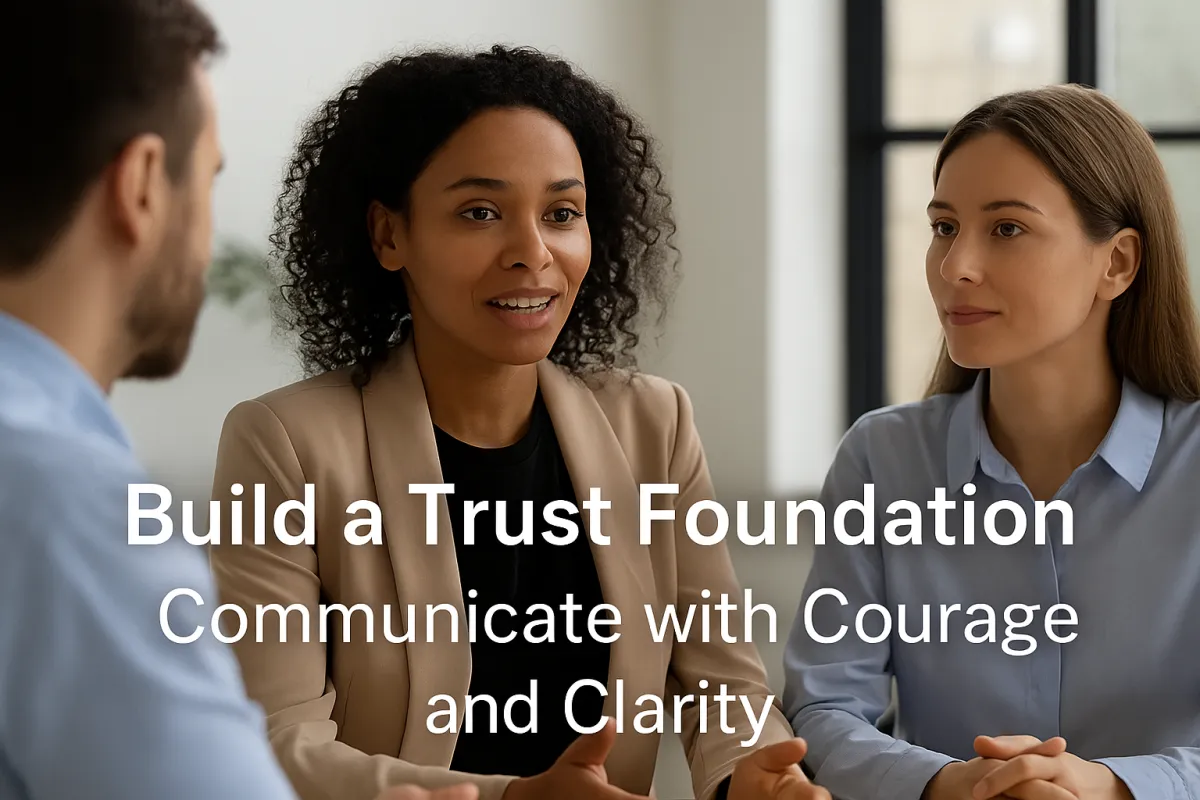
Build a Trust Foundation: Communicate with Courage and Clarity
Part 4 of 5 in the Trust Series
Read Part 1 | Read Part 2 | Read Part 3
TLDR Summary:
Trust thrives on honest, clear, and courageous communication. Leaders who speak truthfully, even when it's uncomfortable, and listen actively foster environments where teams feel safe, valued, and aligned. Effective communication isn't just about conveying information; it's about building relationships and reinforcing trust.
The Role of Communication in Building Trust
Effective communication is the cornerstone of trust within any organization. According to Harvard Business Publishing, leaders set the tone for organizational culture and establish norms of behavior through their communication. When leaders communicate openly and authentically, they create a safe environment where team members feel comfortable expressing themselves and taking risks.
Conversely, poor communication can lead to misunderstandings, eroded trust, and a lack of cohesion within teams. It's not just about what is said, but how it's said—and what remains unsaid.
Courageous Communication: Speaking the Uncomfortable Truths
Courageous communication involves addressing difficult topics head-on, even when it's uncomfortable. This means providing honest feedback, acknowledging mistakes, and having the tough conversations that many avoid.
A study from the Center for Creative Leadership emphasizes that leadership trust creates a stable foundation for employees and their organizations to adapt and thrive in times of continuous change. Leaders who communicate courageously demonstrate integrity and build credibility, which in turn fosters trust.
Clarity: Eliminating Ambiguity
Clarity in communication ensures that messages are understood as intended. Ambiguity can lead to confusion, misinterpretation, and a breakdown in trust.
Leaders should strive to be clear about expectations, goals, and feedback. This involves not only articulating messages effectively but also confirming understanding. Encouraging questions and providing summaries can help ensure that everyone is on the same page.
Active Listening: Valuing Team Input
Communication is a two-way street. Active listening involves fully concentrating, understanding, responding, and then remembering what is being said.
By practicing active listening, leaders show their team members that their input is valued. This fosters an environment of mutual respect and trust. It also allows leaders to gain insights and perspectives that they might not have considered, leading to better decision-making.
Practical Steps to Enhance Communication
Regular Check-Ins: Schedule consistent one-on-one meetings with team members to discuss progress, concerns, and feedback.
Transparent Updates: Keep the team informed about organizational changes, decisions, and the rationale behind them.
Feedback Culture: Encourage a culture where feedback is regularly given and received, and viewed as an opportunity for growth.
Open Forums: Create spaces where team members can voice their ideas and concerns without fear of retribution.
Training: Invest in communication skills training for leaders and team members alike.
The Impact of Effective Communication
When leaders communicate with courage and clarity, they build stronger relationships with their teams. This leads to increased engagement, higher morale, and improved performance.
Moreover, organizations with high levels of trust and effective communication are better equipped to navigate challenges and adapt to change.
This article was brought to you by Avery, Tracy Day’s AI-powered leadership companion.
We’re embracing the future of technology to deliver bold, relevant insights that provide meaningful, actionable information for today’s leaders.
